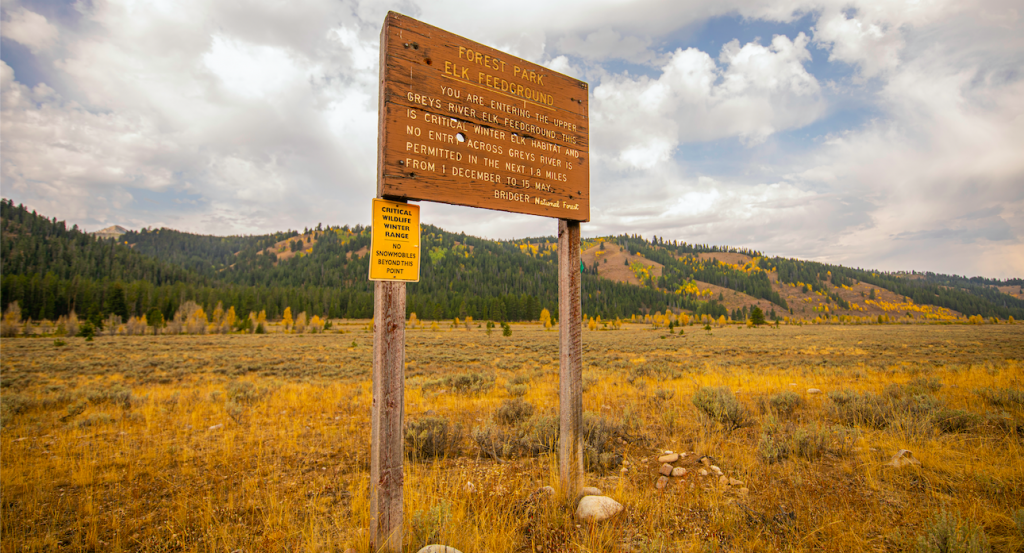Wyoming Elk Feed Grounds: need your help
Winter feeding of wildlife is a hot button issue and often pits wildlife lovers, hunters and conservationists against one other. Elk are fed each winter by the Wyoming Game & Fish Department and the National Elk Refuge. As townships and ranchers established themselves out west, elk were left with very little intact natural winter range.
The Wyoming Game and Fish Commission has tasked the department to hold a series of public meetings to educate the public as to why elk are being fed in Western Wyoming. These public meetings will be held in a virtual format starting December 1st. Click here to view the schedule of this week’s meetings https://wgfd.wyo.gov/events
Recently, two lawsuits have been filed in an attempt to drastically decrease, if not completely shut down, the feeding of elk on set aside winter feed grounds. Radical green groups are attempting to hijack the authority and management of the Wyoming Game & Fish concerning the feeding of elk in Wyoming. The effects of this would have a deep reaching negative impact on elk populations.
The history of the elk feed grounds is an interesting one at that! Elk were first fed in Jackson Hole in the early 19th century. A hard winter caused massive numbers of elk to flock to ranchers haystacks for feed. This created a huge economic hardship for ranchers and negative effects on cattle, haystacks and fence damage. Large numbers of elk perished that year from starvation. After seeing this devastation, the following year the ranchers decided to feed the elk in attempt to keep them from commingling with their cattle. Located in Jackson Hole, Wyoming, wildlife enthusiasts and winter tourists enjoy seeing the elk and can even take a famous sleigh ride through the grounds. In addition to the National Elk Feed Ground, the Wyoming Game and Fish gradually began to subsidize feeding elk and gradually opened state ran feed grounds. There are currently 22 state feed grounds managed by the Wyoming Game & Fish. Many of the state feed grounds are on National Forest Service lands and operate off a special use permit. Three of which are due for reissuing and thus the named areas of attack by the above mentioned lawsuits.
Disease is a huge concern to wildlife managers. Wyomings elk herds in western Wyoming are infected with brucellosis. Although brucellosis has relatively no affect on elk, it’s a major concern and issue for domestic cattle. Feeding the elk herds helps to prevent commingling and infecting cattle during winter when elk go in search of food. Cattle infected with brucellosis abort their calves. This can lead to the cattle being quarantined or even destroyed to prevent the disease from infecting additional herds. Chronic Wasting Disease is also a major concern for game managers in Wyoming. It hasn’t been detected in elk on feed grounds yet but it is surely coming. There are no vaccines or any management strategies identified to stop or prevent Chronic Wasting Disease from spreading. The main endemic area for Chronic Wasting Disease is in eastern Wyoming near Sybille Canyon and Laramie Peak. The mule deer and whitetail deer in these areas run an infection rate of 40-48%! The disease is severely affecting and depressing these deer populations. Interestingly enough, the elk in these same areas are infected at a much lower rate of 3-7%.The Laramie Peak elk herd continues to increase and in fact has recently grown to become Wyomings largest elk herd. Certainly a good argument against concerns about elk feed grounds exacerbating the spread of disease and depressing elk populations.
If elk feed grounds were no longer in operation, the impact would be just as detrimental to other species of wildlife as well. The next to suffer would be mule deer. Western Wyoming has almost limitless amounts of summer and fall range for elk but extremely limited winter habitat. If the elk were no longer fed, they would move into these small winter ranges that are critical to the survival of mule deer. It’s a fore gone conclusion that if Wyoming stops feeding elk, it will lead to devastating impacts on already struggling deer populations.
Wyoming’s statewide elk population is estimated at 113,000 animals. The National Elk Refuge has been feeding an average of 7,500 animals per winter. The 22 state feed grounds feed an average of 15,000 animals yearly. Its estimated 80% of the elk herds in these areas rely on supplemental feed with the remaining 20% surviving on natural forage. With approximately 22,500 elk requiring supplemental feed each winter this equates to approximately 20% of Wyomings elk population being dependent upon feed for survival. This is an eye-opening number!
If Wyoming were to quit feeding these elk, hunting opportunity in western Wyoming would be drastically reduced or completely disappear. While this is extremely important to the outfitting community, it has a colossal impact on Wyoming residents and general public hunters as well. The hunt areas that contain these elk herds are almost exclusively on public land.
The supplemental feeding of elk in Wyoming will always be a controversial subject. Radical green groups despise hunting and management of wildlife for the benefit of humans. The Sierra Club and Western Watersheds Project will always look for ways to prevent the Wyoming Game and Fish from doing their jobs. Rest assured, however, that Wyoming citizens support vibrant populations of elk both for the enjoyment of wildlife viewers and sportsmen and women. Help us stop this effort and please consider a donation to the efforts of WYOGA. Any size donation is welcome at Wyoming Outfitter & Guides Association.


